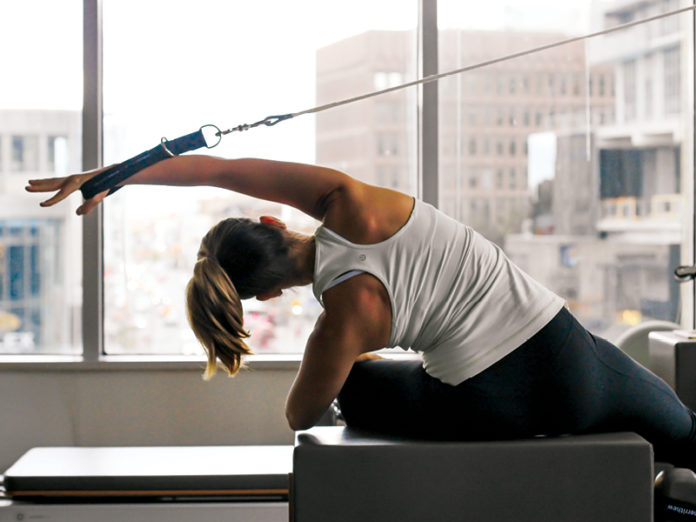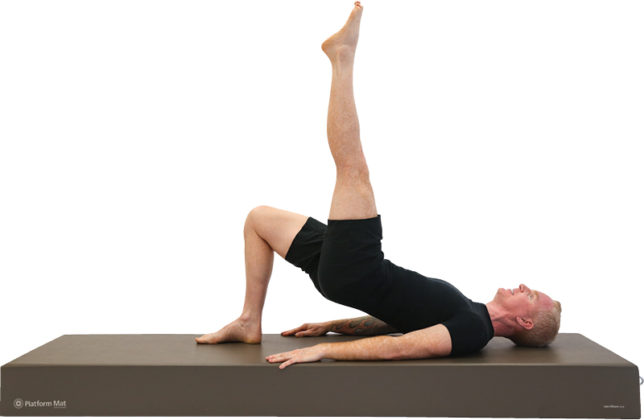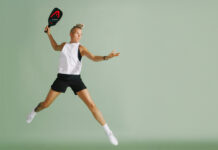
Anyone who has ever trained hard to reach an athletic goal knows the importance of training tools. The right tools can help boost performance and endurance, while reducing the risk of injury. Adding Pilates to your toolkit would give a powerful boost to your training.
Pilates stabilizes joints and helps build mobility. The focus on breath and precise movement develops an awareness of how the body works and how it functions in particular movements – an awareness that provides a solid foundation for any kind of athletic activity, from sports such as football or baseball to dance to walking or running. Pilates neatly complements almost every kind of athletic activity and instruction can be sport-specific. Pilates is also useful in post-rehab therapeutic situations, as it emphasizes correcting imbalances in the body through lengthening tight muscles and strengthening areas that need more stability. More stable joints and increased mobility in the body also help reduce the risk of injury.
Though a common image of Pilates is of someone perched on a reformer or another piece of large equipment, Pilates is actually extraordinarily accessible. A large repertoire of Pilates exercises are mat-based that can be done almost anywhere, indoors or out, as warm-ups or cool-downs.
Here is a selection of exercises that can benefit cyclists and runners:
1. Bike Training – Shoulder Bridge
This exercise focuses on the glutes and hamstrings for a better pedal stroke.
Starting Position: Lying on the back, spine neutral, with some space between the small of the back and the floor. Arms by sides, palms down.
Exercise
- Inhale to prepare.
- Exhale, lifting the hips up, hold.
- Inhale, lengthen right leg toward the ceiling, foot plantar flexed.
- Exhale, dorsiflex the foot as the leg lowers to hip height.
- Repeat 3x, then switch to other side.
- Repeat 5x on each side.
Modification: For increased challenge, repeat the exercise with the arms lifted directly above the shoulders, fingers pointing up.
For decreased challenge, repeat the exercise while peeling one foot off the floor and lifting it slightly, keeping the knee bent, then switching sides.
Expert Tip: Keep the weight even across the back to activate the posterior muscles, and keep the glutes active to ensure the hips stay level.
2. Run Training – Side Kick
This exercise helps strengthen the hip flexors and glutes for a faster running pace.
Starting position: Lying on one side, with the head resting on the bottom arm. Legs forward at a 45 degree angle with the top leg lifted to hip height.
Exercise
- Inhale and, with control, kick the top leg forward only as far as a neutral pelvis can be maintained and with the foot dorsiflexed.
- Exhale, plantar flex the foot as the leg kicks back behind the hip maintaining neutral.
- Repeat 5x on each side.
Modification: Intensify the exercise by bending the upper arm at the elbow, mimicking a running motion. As the leg kicks back, the arm moves forward, and as the leg moves forward, the arm moves back.
Expert Tip: Keep the core strong and maintain the distance between ribs and hips. If the core collapses, the hip and ribs will move closer to each other.

3. Run Training – Hip Twist
Develop dynamic stabilization around the hip and core endurance for a steadier pace.
Starting position: Seated position, with hands placed behind the body, arms straight, legs together, extended toward the ceiling.
Exercise
- Inhale to prepare.
- Exhale to circle both legs clockwise back to the starting position.
- Inhale and pause.
- Exhale to circle both legs in a counter clockwise motion back to the starting position.
- Repeat 5x in each direction.
Modification: If the hamstrings are tight or the core is strained, bend the knees at a 45-degree angle, which lessens the lever and takes pressure off the abdominals and hamstrings.
Expert Tip: Pay attention to small details like the elbows and arms. Arms should be straight but not hyperextended, and the torso should remain long and straight, with shoulders down and room around the neck.




















